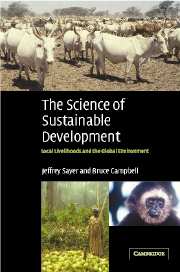Bibliography
Published online by Cambridge University Press: 18 May 2010
- Type
- Chapter
- Information
- The Science of Sustainable DevelopmentLocal Livelihoods and the Global Environment, pp. 248 - 262Publisher: Cambridge University PressPrint publication year: 2003



